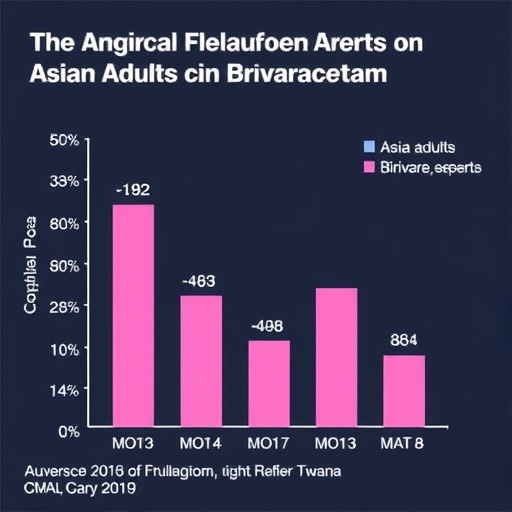
Credit: Illustrated by Carol Green. Copyright 2018 The Authors. Published by Elsevier.
Oxford, May 17, 2018 Increased rates of active travel (e.g., walking or cycling) to school in New Zealand children and youth were associated with shorter distances to school, and neighborhoods with more connected streets, less residential density, and lower socio-economic status, reveals a new systematic meta-analysis published in Journal of Transport and Health.
Urban form changes over recent decades in New Zealand reflect car-oriented, low density neighborhoods and greater sprawl. Obesity is a public health problem estimated to cost the country NZ$849 million a year. New Zealand has one of the highest rates of child obesity, and the lowest rates of active travel to school internationally. With evidence clearly showing tracking of obesity and activity behaviors from childhood to later life, tackling these issues early is imperative. Understanding the reasons for the low, and declining prevalence of active travel to school has become a priority for governments, urban planners, public health practitioners, and school and community groups.
This review provides in-depth understanding of how self-reported active travel modes were associated with objectively measured neighborhood built environment features (e.g., density of residence and intersections, distance to school) using geographic information systems (GIS). The meta-analysis included five studies across four major cities in New Zealand involving 2,844 children and youth aged 6-19 years.
"Meta-analysis is regarded as problematic to perform in the area of the built environment due to measurement inconsistency between individual studies. However, our review was accomplished by collaborating with several researchers across the country," said Erika Ikeda, MHSc and doctoral student, at Auckland University of Technology, Auckland, New Zealand. "Our experience has demonstrated the importance and value of undertaking a process such as this despite the challenges, particularly for generating robust, context-specific information.
"Our findings can substantially contribute to the development of policy and programs as well as the improvement of walking and cycling infrastructure. For example, planning decisions for school locations and school zoning/catchment policies should consider the impact of distance to school. Creating walking and cycle paths, trails and greenways improves street connectivity in school neighborhoods," Ms. Ikeda concluded.
This project is part of a larger investigation to identify "the secret recipe for active school travel," funded by the Ministry for Business Innovation and Employment. Research leader Associate Professor Melody Smith stated: "This world-first project is a fundamental first step in generating a context-specific understanding of the complexities of supporting active travel modes to school. Sensitivity and specificity are so important when we consider relationships between the built environment and health. That's what makes us so excited about this – when we combine these findings with insights from natural experiments and stakeholder interviews, we will have a truly comprehensive and context-specific model for school travel that can be used to inform urban planning practice, and ultimately improve physical activity and child health."
###
Notes for editors
The article is "Built environment associates of active school travel in New Zealand children and youth: A systematic meta-analysis using individual participant data," by Erika Ikeda, Tom Stewart, Nicholas Garrett, Victoria Egli, Sandra Mandic, Jamie Hosking, Karen Witten, Greer Hawley, El Shadan Tautolo, Judy Rodda, Antoni Moore and Melody Smith (https://doi.org/10.1016/j.jth.2018.04.007). It appears in Journal of Transport and Health, published by Elsevier.
Copies of this paper are available to credentialed journalists upon request; please contact the Elsevier Newsroom at [email protected]. Journalists wishing to interview the research team, please contact Erika Ikeda at [email protected] or +64212593897.
About Journal of Transport & Health
The journal aims to cover transport and health issues in all countries. Three particular aims of the journal are: to promote dialogue between the two research communities it serves; to improve the quality of data and the appropriate use of data; and to encourage transfer of research into practice. http://www.journals.elsevier.com/journal-of-transport-and-health
About Elsevier Elsevier is a global information analytics business that helps institutions and professionals advance healthcare, open science and improve performance for the benefit of humanity. Elsevier provides digital solutions and tools in the areas of strategic research management, R&D performance, clinical decision support and professional education, including ScienceDirect, Scopus, SciVal, ClinicalKey and Sherpath. Elsevier publishes over 2,500 digitized journals, including The Lancet and Cell, more than 38,000 e-book titles and many iconic reference works, including Gray's Anatomy. Elsevier is part of RELX Group, a global provider of information and analytics for professionals and business customers across industries. http://www.elsevier.com
Media contact
Chris Pringle, Executive Publisher
Elsevier
+44 1865 84 3712
[email protected]
Media Contact
Chris Pringle
[email protected]
44-186-584-3712
@elseviernews
http://www.elsevier.com
Original Source
https://www.elsevier.com/about/press-releases/research-and-journals/new-zealands-secret-recipe-for-active-school-travel-the-neighborhood-built-environment http://dx.doi.org/10.1016/j.jth.2018.04.007




